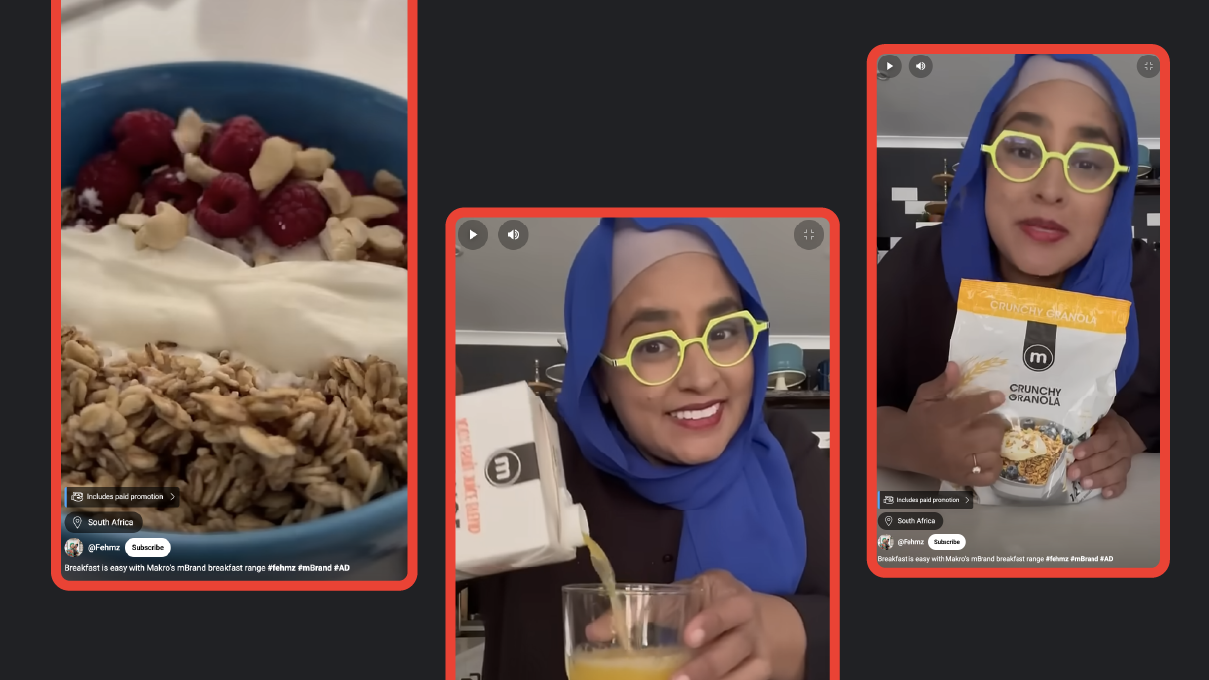Lunga Mooi leads digital marketing, media, and digital commerce at Unilever South Africa, where he is responsible for the new brand positioning of their seasoning brand, Aromat.
Some things are distinctly South African: sending money via e-wallet, the guys at the ‘robots’ who wash your car’s windscreen for your loose change against your will, and of course, load shedding. At Aromat we’re all too aware of this. As a seasoning brand, we’re a staple in many South African homes and, as such, we’ve positioned ourselves as a part of the local culture.
But even as the brand’s popularity has remained consistent across the country, many still believe that Aromat is only good for spicing up eggs. To show there’s a lot more you can do with our product, we set out to change this perception with a new video ad campaign, leveraging our new “one-video” strategy.
One consumer, one video strategy
TV is a big part of video advertising in South Africa. At Unilever, we continue to see it as an important media channel because of its wide reach. For this campaign to be effective, however, we wanted to make sure that we were reaching consumers across every screen they have access to.
In the past, digital platforms like YouTube were seen as a nice-to-have, but we’ve realised that it can be an effective driver of incremental reach — or the unique audience you reach through a specific marketing initiative, on top of your already existing efforts. This has moved our team away from planning TV advertising and YouTube advertising in silos, to planning a “one-video strategy” that helps us get the best out of both channels.
While the number of screens people have access to today has increased, the consumer is still one person. And our advertising strategy needed to reflect that. TV affords us the largest reach possible, but YouTube tends to drive a higher attention span and stronger engagement for us. That’s why we decided to pair up the two — diversifying our media mix and helping us connect with audiences across screens.
Planning for one consumer across multiple screens
In the past at Unilever, production budgets were largely set aside for TV commercials. But it’s unrealistic to simply upload a TV ad to YouTube and expect the same results. We understand that consumers are in a different mindset depending on which screen they’re using, and so went about tailoring our ad accordingly.
We started by determining the right media mix between TV and YouTube. We used Google's Reach Planner and a supplementary TV plus YouTube calculator to understand the gross rating points (GRPs) that we would get from a campaign with a one-video strategy. GRPs measure the effectiveness of an ad based on the consumers’ ability to recall it. With a clear sense of the reach each platform could offer us, we were able to set appropriate budgets.
Next, we turned our attention to the video asset itself. As people sit down to watch TV when they have time to relax, TV ads tend to follow story arcs that build over a longer period of time. On digital platforms, like YouTube, people have the choice to skip and move on, so it’s important to start big and grab their attention immediately.
To help us strike the perfect balance, we partnered with Google’s Creative Works team, who helped us adapt our Aromat TV ad for YouTube. The ad was run through YouTube’s ABCDs assessment which surfaced some key optimisations:
A = Attention
Our TV commercial follows a traditional story arc that TV viewers expect. The first 5 seconds set the scene for the ad. These 5 seconds are critical on YouTube because after this, viewers get the option to skip the ad. So for our updated YouTube ad, we introduced our branding within the first 2 seconds of the video to hook viewers in from the get go.
B = Branding
In order to drive better performance, it’s important to maintain consistent branding throughout any video asset. To ensure our branding was consistent, we ensured that the Aromat brand featured prominently and repeatedly during the 20-second YouTube advert.
C = Connection
Familiar faces, like celebrities and influencers, can be used to help establish a connection more quickly in an online ad. However, since we opted for diverse characters in the original TV commercial to connect with audiences, we decided to feature the same people in the YouTube edit for familiarity.
D = Direction
It’s a best practice to include a visual clue and voiceover for the call to action. As the original ad already included this, we didn’t need to create anything new for the online edit.
TV and YouTube are effective mediums on their own, but together they really spice things up
Using TV and YouTube together in a one-video strategy helped us get the brand where it needed to be. We had not been advertising Aromat on TV for some time, which resulted in declining Brand Power scores.

The launch of this one-video strategy, however, helped us grow Aromat’s score again. The overall campaign — across TV and YouTube — drove 70% reach, with YouTube delivering the highest impact at 48% reach (the percentage of the audience that was exposed to the campaign), compared to the South African average of 23% for digital platforms.1
Looking ahead, we plan on leveraging the one-video strategy across the Unilever business. We’ll also continue delivering flavourful ads and creative in local languages as we work to make Unilever a seamless part of everyday South African culture.






